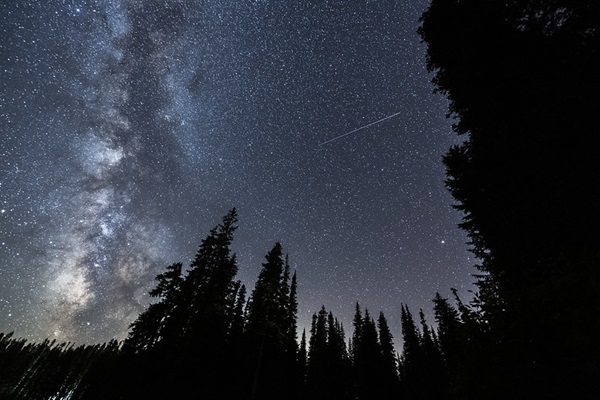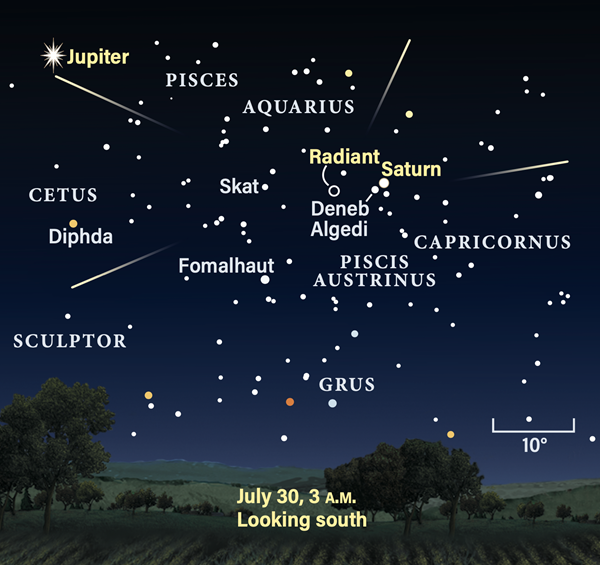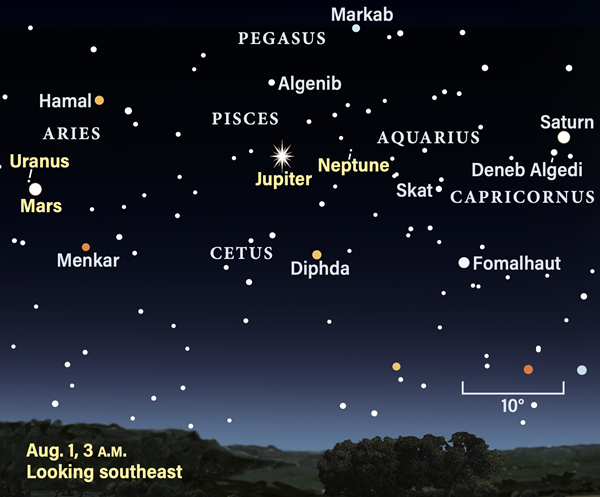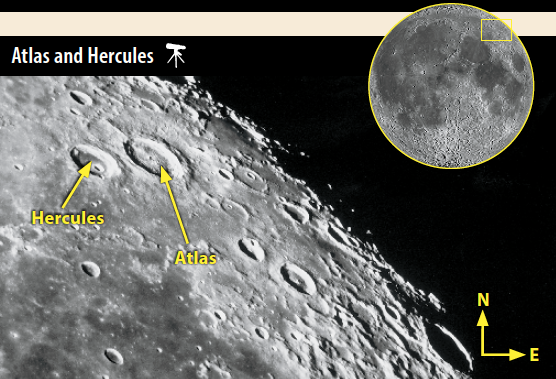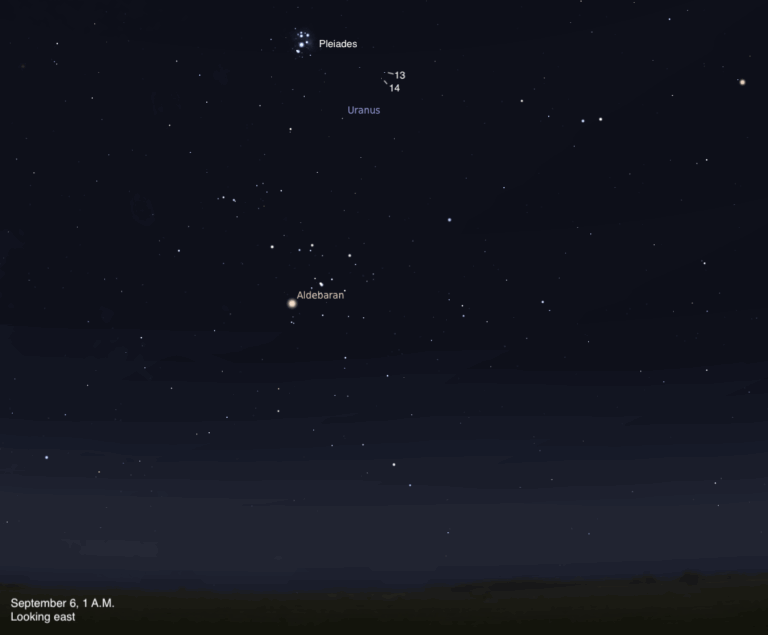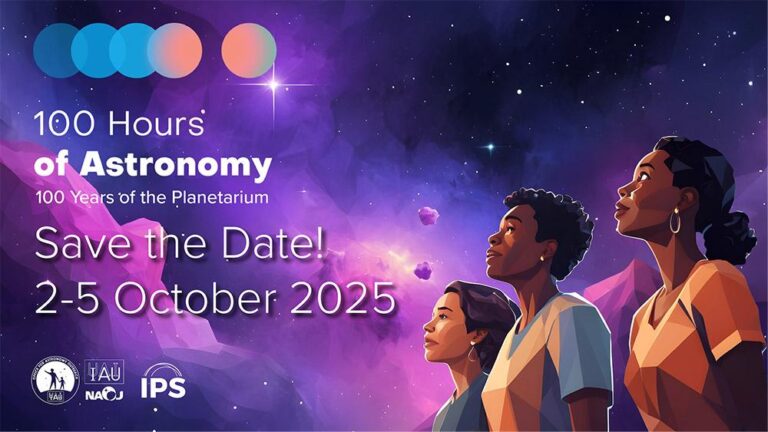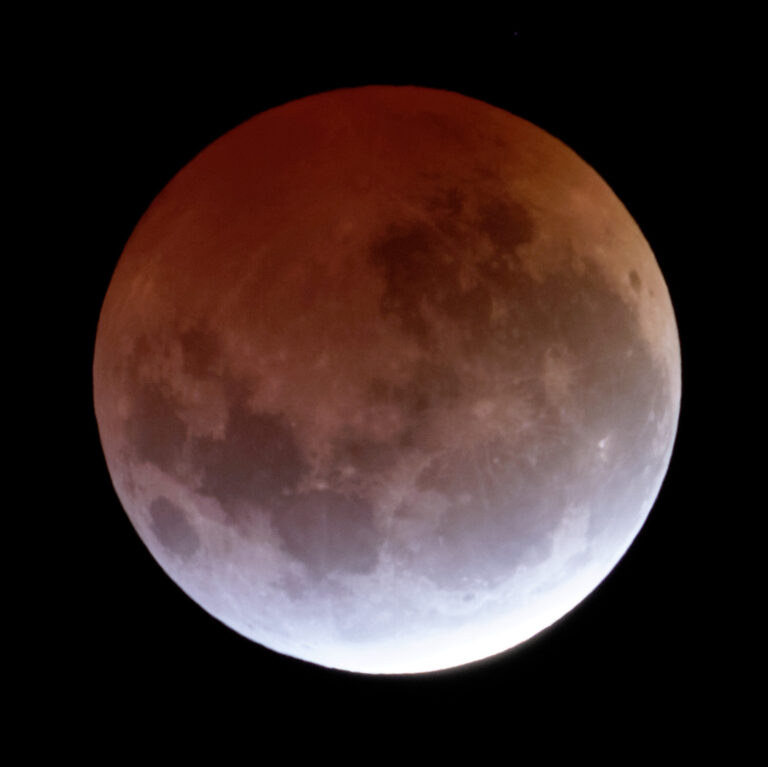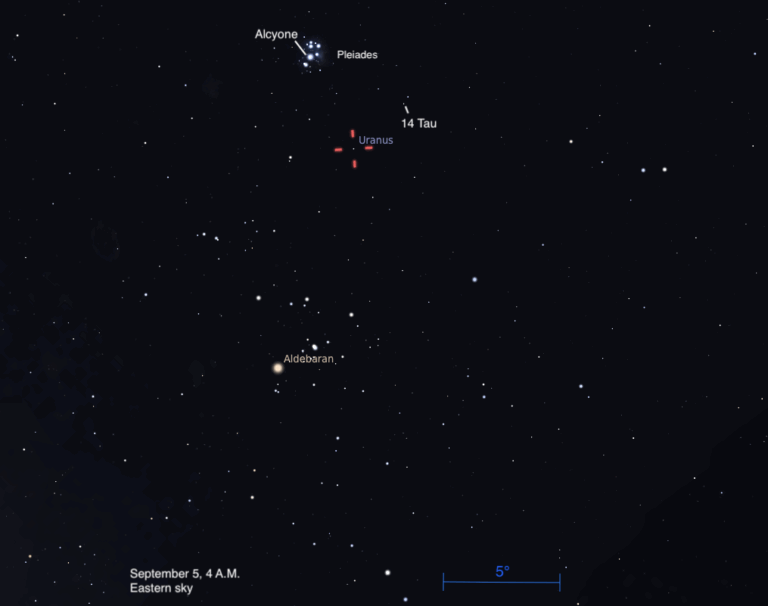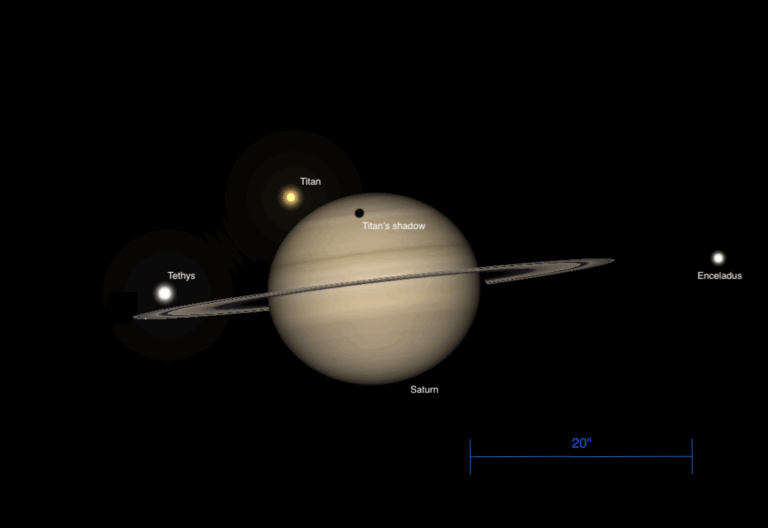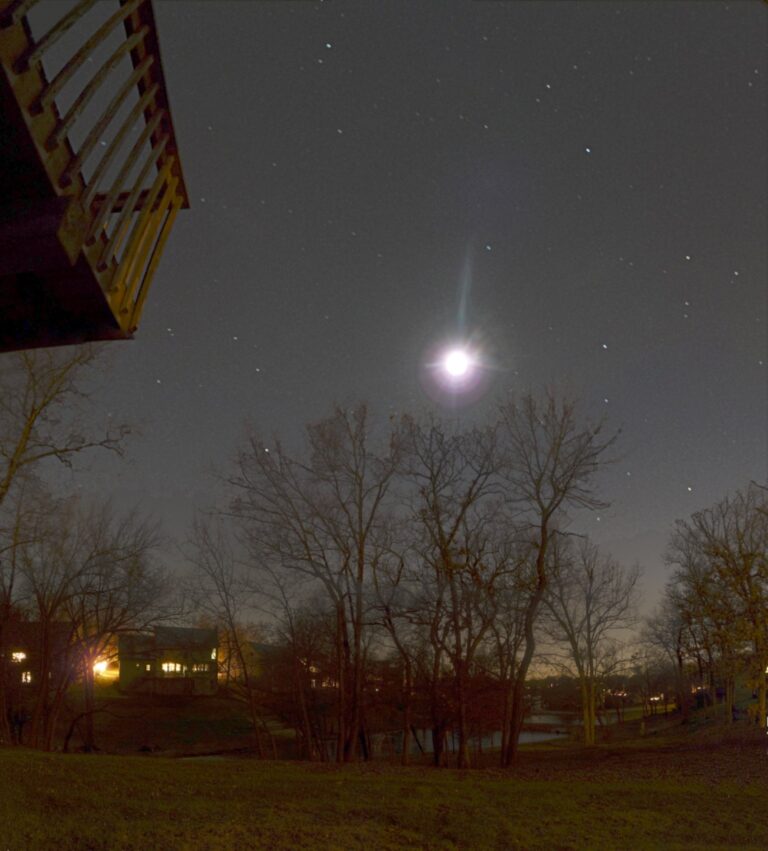Key Takeaways:
Friday, July 29
Jupiter, which has been moving east through Cetus the Whale, reaches its stationary point today at 8 A.M. EDT. It will now turn around and start moving west, or retrograde, against the background stars.
Previously a morning star, Mercury has slipped into the evening sky. Tonight, it hangs just 2.7° below the thin crescent Moon. About 15 minutes after sunset, look west to see if you can spot our satellite, now nearly 2 percent lit, about 8° above the horizon. Mercury, glowing at magnitude –0.8, sits just below and to the left of the Moon. Through a telescope, its 5″-wide disk appears nearly 90 percent lit. Both are near the western edge of Leo as the Lion makes his way toward the horizon, following the Sun.
Mercury is sliding nearly parallel to the ground each night, thanks to the shallow angle between the ecliptic (the plane of our solar system) and the western horizon at this time of year. In a few days’ time, the planet will have moved deeper into Leo, sitting just a few degrees from the constellation’s alpha star — we’ll return to check it out then.
Sunrise: 5:56 A.M.
Sunset: 8:16 P.M.
Moonrise: 6:30 A.M.
Moonset: 9:19 P.M.
Moon Phase: Waxing crescent (1%)
*Times for sunrise, sunset, moonrise, and moonset are given in local time from 40° N 90° W. The Moon’s illumination is given at 12 P.M. local time from the same location.
Saturday, July 30
The Southern Delta Aquariid meteor shower peaks this morning under dark skies — perfect for catching some shooting stars before sunrise. Although this shower tends to produce faint meteors and its radiant doesn’t climb particularly high for Northern Hemisphere observers (those in the Southern Hemisphere get a better show), it’s still worth stepping outside if you’re up early to try your luck.
Plus, it’s worth noting that the Perseids, which peak in the second week of August, are already ramping up for their big show. Although that maximum falls around the time of the next Full Moon, you may catch some early Perseids mixed in with the Southern Delta Aquariids over the next few days.
The Southern Delta Aquariids’ radiant is located in southwestern Aquarius, roughly two-thirds of the way along a line drawn from 3rd-magnitude Skat to Deneb Algedi in Capricornus (also 3rd magnitude). As a bonus, Saturn sits just 1.5° northwest of Deneb Algedi, offering a fine target for binoculars or small scopes. The ringed planet is nearing opposition also in the second week of next month, and now is the best time to catch some great views. Saturn reaches its greatest altitude in the Northern Hemisphere around 2 A.M. local time, when it sits around 35° high in the southern sky.
Sunrise: 5:57 A.M.
Sunset: 8:16 P.M.
Moonrise: 7:33 A.M.
Moonset: 9:47 P.M.
Moon Phase: Waxing crescent (4%)
Sunday, July 31
Comet C/2017 K2 (PanSTARRS) still rules the evening skies as it makes its way through Ophiuchus, headed into Scorpius next month. Tonight, the comet sits just 3° north of M107, an 8th-magnitude globular cluster discovered by Charles Messier’s associate Pierre Méchain in 1782.
Compare and contrast the comet’s coma — now roughly half a magnitude fainter than the cluster — to M107. They should create a stunning pair as they sit side by side; the comet’s stubby tail may give it away, extending slightly from its northern flank, pointed away from the Sun. Astrophotographers will want to try capturing both in one shot to bring out more detail.
Because of its proximity to the plane of the Milky Way, Ophiuchus is home to several deep-sky objects, including globular clusters. While it’s high in the sky this evening, consider taking a tour, stopping by some or all of those that made it into Messier’s catalog: M9, M10, M12, M14, M19, M62, and M107.
Sunrise: 5:58 A.M.
Sunset: 8:14 P.M.
Moonrise: 8:35 A.M.
Moonset: 10:11 P.M.
Moon Phase: Waxing crescent (8%)
Monday, August 1
Mars passes 1.4° south of Uranus at 5 A.M. EDT. At that time, both are high in the eastern sky, sitting in the sparse southeastern region of Aries the Ram. Mars is easy to find — the Red Planet is now magnitude 0.2 and will continue to brighten throughout the month, reaching magnitude –0.1 by the beginning of September. Uranus, though, will require binoculars or a telescope, as its magnitude 5.8 disk is below the threshold of naked-eye visibility. Look for it to Mars’ upper left in the sky. As sunrise approaches, the worlds will continue to climb higher, eventually disappearing with the dawn.
Both planets are about 13° southwest of the Pleiades open cluster, cataloged as M45. This young cluster of stars often appears as a small dipper to the naked eye, prompting some to wonder if it’s the famous Little Dipper asterism. However, that star pattern is in the north, forming the long, pulled-out tail of Ursa Minor the Little Bear. This morning, the Little Dipper sits upside-down with its cup or bowl to the left and its handle to the right, terminating in Polaris, the North Star.
Sunrise: 5:59 A.M.
Sunset: 8:13 P.M.
Moonrise: 9:39 A.M.
Moonset: 10:33 P.M.
Moon Phase: Waxing crescent (15%)
Tuesday, August 2
During August, the American Association of Variable Star Observers (AAVSO) celebrates R Aquilae as its featured variable star of the month. Classified as a Mira-type variable star, R Aquilae is an aging star in the red giant phase of its life. At its brightest, it is just visible to the naked eye as a magnitude 5.5 red star. At its dimmest, however, its brightness dips by more than 600x and it is just visible with binoculars at magnitude 12. The period over which this happens (from one maximum to the next) is about 270 days — about 2/3 of a calendar year. So, if you don’t happen to catch the star at its brightest, it may be several months before you’ll be able to pick it up without your binoculars or telescope.
To find R Aquilae, look about 5.6° south of Deneb Al Okab Australis (Zeta [ζ] Aquilae), a magnitude 3 star. If you’re having trouble finding that particular signpost, try first locating Altair, the brightest star in Aquila and part of the Summer Triangle. Zeta Aquilae is just over 12° west-northwest of Altar. Then, drop due south to find your target.
The other two stars that make up the Summer Triangle are Vega in Lyra and Deneb in Cygnus. This famous asterism is, as its name might suggest, easily visible at this time of year, swinging overhead around local midnight. The plane of the Milky Way runs right through the Summer Triangle, offering a wide range of astronomical treats to explore on warm summer nights.
Sunrise: 5:59 A.M.
Sunset: 8:12 P.M.
Moonrise: 10:41 A.M.
Moonset: 10:56 P.M.
Moon Phase: Waxing crescent (22%)
Wednesday, August 3
The slowly waxing Moon lies in Virgo this evening, not far from the stunning double star Porrima (Gamma [γ] Virginis). Through a telescope, this point of light splits into two of roughly equal magnitude: 3.65 and 3.56. According to Astronomy contributor Raymond Shubinski, “they look like two tiny headlights in space” about 3″ apart.
But back to the Moon, where we’ll focus on a bit of strange terrain in the lunar east (west on the sky). Along the lower left (western) edge of the Sea of Tranquillity lie several north-south wrinkle ridges that seem to really stand out under the low Sun angle. The nearly circular crater Arago boasts sharply defined walls, while to its west lies the half-buried Julius Caesar. Lunar researchers think that over time, lava welled up again and again in this region; one rim of Julius Caesar is lower than the other because of the sloping terrain where it formed, so only the higher portions of the crater rim remain easily visible. Just south of Julius Caesar is Rima Ariadaeus — a curious-looking crack that formed as the lunar surface pulled apart here.
Sunrise: 6:00 A.M.
Sunset: 8:11 P.M.
Moonrise: 11:46 A.M.
Moonset: 11:20 P.M.
Moon Phase: Waxing crescent (32%)
Thursday, August 4
Mercury passes 0.7° north of Regulus in Leo at 1 A.M. EDT. The pair is visible shortly after sunset, another 0.1° farther apart as they sink toward the western horizon. Mercury is now magnitude –0.5 and stands 4° high 30 minutes after sunset. You’ll need binoculars to find fainter Regulus (magnitude 1.4).
As the front half of Leo disappears in the growing dark, turn your attention east to the great cat’s hindquarters. Three stars here form a right triangle: 3rd-magnitude Chertan and Zosma (5° north of Chertan), followed by 2nd-magnitude Denebola to their east at the tip of the Lion’s tail.
If you notice a particularly bright star far to Denebola’s upper left, that’s Arcturus in Boötes. Just 37 light-years away, this aging red giant appears particularly bright in our sky and, if plopped into the center of our solar system, would reach a quarter of the way from the Sun’s position to Mercury.
Sunrise: 6:01 A.M.
Sunset: 8:10 P.M.
Moonrise: 12:53 P.M.
Moonset: 11:46 P.M.
Moon Phase: Waxing crescent (42%)
Friday, August 5
First Quarter Moon occurs this morning at 7:07 A.M. EDT.
With Saturn now just over a week from opposition, let’s revisit the ringed planet in the evening sky to take stock. An hour after sunset, magnitude 0.3 Saturn is 6° high and rising in the east, still near Deneb Algedi in Capricornus. Zoom in on the giant with a telescope and you’ll see that its disk stretches 19″ across the equator and 17″ from pole to pole. Its magnificent ring system spans nearly 43″ end to end.
Tonight, the planet’s largest moon, Titan, sits some 47″ northeast of the planet, having passed through superior conjunction earlier today. At magnitude 8.5, it should be readily visible through a telescope. Three magnitude 10 moons — Tethys, Dione, and Rhea — all lie east of the planet. Tethys is closest to the rings, while Dione and Rhea sit farther out, about 1′ from Saturn’s center. Iapetus is heading toward western elongation on the 9th, when it will shine at its brightest, also reaching 10th magnitude.
Sunrise: 6:02 A.M.
Sunset: 8:09 P.M.
Moonrise: 2:03 P.M.
Moonset: —
Moon Phase: Waxing gibbous (53%)

